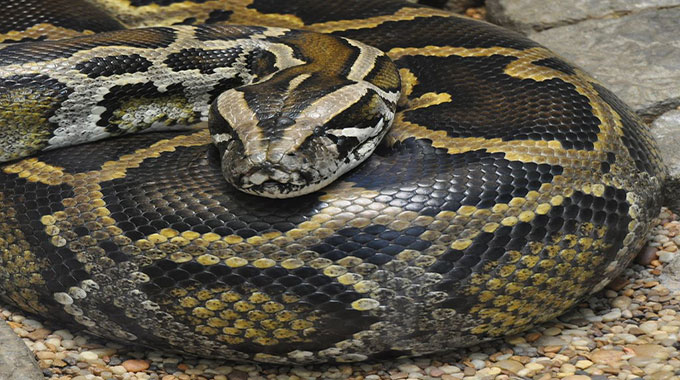
The Sunday News

Phineas Chauke
THE relationship between the average man and snakes has never been smooth. Snakes are feared and loathed by man for reasons which include them being perceived to be associated with evil, their lethal bites and just their appearance in some cases.
Man’s instinct is to kill a snake whenever they see one, this is regardless of where it has been seen or what kind of snake it is.
The lack of knowledge about snakes and some mythical beliefs have also contributed to the indiscriminate killing of these serpentine reptiles.
The objective of this article is by no means to portray snakes as all saintly and innocent but implore man to master his environment, generate and use knowledge rather than decimation to dominate.
Snakes fall under the scaled reptilian order squamata. They are carnivorous, feeding on a variety of animals including other snakes. It is very unusual for snakes to feed on people, at least in these parts of the world. As a disclaimer, here we are talking of real, natural snakes, not “juju” ones. Different snakes use different means to subdue and capture prey. Some like pythons, boas and anacondas use powerful abdominal muscles to constrict their victims and squeeze the life out of them.
Others like adders, cobras, mambas and back-fanged tree snakes use toxins that are transfused into the victim’s body.
Toxins emitted by snakes are known as venom and there are a variety of them. Snake venom is modified saliva that is either injected into the victim using the hollow fangs in the snake’s mouth or projected from the fangs to the victim from a distance.
Not all venomous snakes can “spit” their venom onto victims but quite a few are able to do so. Although the generality of snakes have teeth, the “hollow” fangs are only found in the venomous ones.
It is important to note that snake venom is meant for killing prey. Snakes, however, may resort to using their venom when they feel threatened or cornered by humans. Sometimes the most effective way of overcoming fear is to gain knowledge and understanding of the feared object or phenomenon.
Even when something must be viewed as an enemy, it pays dividends to study that adversary behaviour and be able to anticipate its actions. Sometimes people break their legs trying to run away from harmless snakes, because they don’t know which one is harmful and which one is not. Sometimes people get bitten by snakes trying to kill them when they could “politely ask the snake to leave” or just call professionals to come and remove it. It is a wise idea to keep contacts of snake handling professionals in case of emergency.
Plenty of snakes are seen during the hot months which is when they are most active. During the cold winter months snakes go into hibernation because their bodies cannot bear the cold. The metabolism of snakes is very low when it is cold therefore, they avoid eating, go into hiding and “switch–off.” Snakes are not very active after swallowing a big meal and in most cases if they sense danger after eating, they regurgitate the food and escape.
Unlike the “attack at first sight” stance of man, some snakes may warn you that you are getting too close for their comfort. This is achieved through hissing or bluffing depending on the snake species. Some snakes, however, will try to avoid a confrontation by running away or freezing in an attempt to avoid being seen.
Snakes do not have the same abilities, those that are endowed with speed such as mambas and cobras will run away but the sluggish ones such as vipers and adders will freeze. To their advantage, vipers and adders are cryptically coloured making them difficult to spot and this aid their freezing or hiding defensive strategy.
Feared by humans as they are, snakes themselves do not enjoy safe existence in this world. Among their chief persecutors are humans and their vehicles, birds of prey, wild fires and other birds.
Snakes are beneficial to humans in that they control vermin populations and some of their properties are incorporated in extensive medical research for the treatment of some of the ailments, which have tormented humanity for ages.
Phineas Chauke is a tourism consultant, marketer and tour guide. Contact him on +263776058523 [email protected]



